What's New
Displaying results 3391 - 3400 of 4052
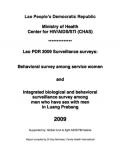
Resource | Publications,
While the prevalence of HIV among female sex workers and clients remains inferior to 0.5% as 2008, a survey conducted the same year in Vientiane found 5.5% prevalence of HIV among MSM. Additional information is needed to document the state of the epidemic in this particular high-risk group that is currently the group with the highest incidence in neighboring Thailand.
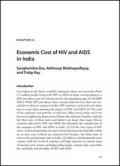
Resource | Publications,
According to the latest available estimates, there are currently about 2.5 million people living with HIV or AIDS in India, corresponding to a HIV prevalence rate of 0.36 percent for the population ages 15–49 (IIPS 2007). While HIV prevalence thus remains relatively low, there are several factors that are unique to India’s HIV epidemic, and need to be taken into account when assessing the impact of HIV and AIDS.
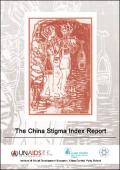
Resource | Publications,
This report is based on a survey of the experience of more than 2000 respondents living with HIV in China. The survey will increase the understanding of how stigma and discrimination is experienced by people living with HIV (PLHIV) and it is hoped that the results will inform future discussions, programmes and policies in China.
The information gained will provide data on the current situation and areas requiring future action. These include anti-stigma and anti-discrimination campaigns, improving workplace and education sector policies, informing the formulation of laws relevant to the AIDS response and promoting the realization of human rights. Consequently, the report is an advocacy tool, which will support the collective goal of the Government, the UN, NGOs and community based organisations alike to reduce stigma and discrimination linked to HIV in order to reach the goal of Universal Access to prevention, treatment, care and support, and the Millennium Development Goals (MDGs).
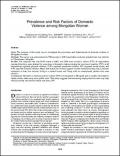
Resource | Publications,
The purpose of this study was to investigate the prevalence and determinants of domestic violence in Mongolian women. The survey was administered to 5500 people in 1000 households randomly selected from two districts of Ulaanbaatar, Mongolia. Domestic or intimate partner violence (IPV) is widespread in Mongolia and is usually committed in family circles, often away from public view. This study suggests that increasing employment for men may help reduce poverty and alcohol abuse and, thus, IPV.
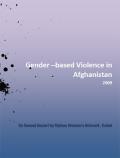
Resource | Publications,
Afghanistan Women's Network, a coordinating network of over 70 women organizations and groups, and more than 3000 individual members was established following the 1995 Beijing +5 conference, in Pakistan. Since then, the network has been actively involved in women empowerment, activism for women's rights, addressing child protection at the local, national and international arenas. The member activists of the network, have been struggling hard for the realization of women's rights as defined in national and international commitments of the Afghanistan government as well as within the Afghan society.
This report aims to provide a general overview on the current conditions of women of Afghanistan from a gender perspective. The network believes that the conditions of women can only be empowered if her status and condition is improved within her relations with the other half, both at the domestic and public spheres. Therefore for the purpose of this report, Violence against Women and Gender-based Violence have been used interchangeably in this report, however they do not have the exact same meanings.
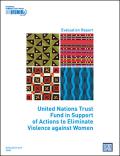
Resource | Publications,
Violence against women and girls is a problem of pandemic proportions and one of the most widespread human rights violations in the world. There is an increasing commitment by governments and donors to respond to this huge problem, evidenced by the adoption of a growing number of national policies and laws, and increased resources being made available for programme implementation -- including for the UN Trust Fund (UNTF).
This report presents the results of the evaluation of the United Nations Trust Fund in Support of Actions to Eliminate Violence against Women. Its importance is closely related to the current growing global momentum on ending violence against women and girls, including the General Assembly Resolutions from 2006 and 2007 on Intensification of Actions to Eliminate Violence Against Women and most recently, with the launch of the Secretary-General’s Campaign 'UNiTE to end violence against women'.
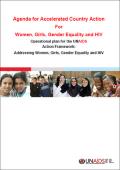
Resource | Publications,
The Agenda for Accelerated Country Action for Women, Girls, Gender Equality and HIV 2010–2014 (Operational Plan) supports the implementation of the UNAIDS Action Framework: Addressing Women, Girls, Gender Equality and HIV. The Action Framework was developed in response to the pressing need to address the persistent gender inequalities and human rights violations that put women and girls at a greater risk of HIV, and increase their vulnerability. These factors also threaten the gains that have been made in preventing HIV transmission and in increasing access to antiretroviral therapy. The UNAIDS Action Framework focuses on action in three areas in which UNAIDS and UNIFEM can make specific and unique contributions.
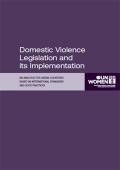
Resource | Publications,
In its General Recommendation 19 the CEDAW Committee states, that the definition of discrimination against women includes gender–based violence, that is "violence that is disproportionately directed against a woman because she is a woman or that affects women disproportionately. It includes acts that inflict physical, mental or sexual harm or suffering, threats of such acts, coercion and other deprivations of liberty. Gender-based violence may breach specific provisions of the Convention, regardless of whether those provisions expressly mention violence".
These research papers - International Standards on Domestic Violence Legislation and Overview of Global Good Practices on Domestic Violence Response Systems prepared by the Lawyers Collective Women's Rights Initiative, India, and contained in this publication, contribute strongly to the enhancement of domestic legislation in the ASEAN region. Drawing on international standards and good practice globally, they not only provide a rich analysis of existing legislation, but a robust framework to enhance the gender responsiveness of legislation and its implementation.
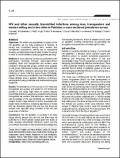
Resource | Publications,
The prevalence of HIV was low in 917 male and transgender sex workers and absent in 533 female sex workers in the study. High levels of current sexually transmitted infections were found, predominantly among transgender sex workers. Risk behaviours were common and knowledge of HIV was extremely low.
The HIV epidemic is currently in its early stages among people who sell sex, but there may be potential for a much greater spread given the levels of other sexually transmitted infections found and the concomitant low levels of both protective knowledge and risk-reducing behaviours. Action is needed now to avert an epidemic. Framing interventions by upholding the recognition and protection of human rights is vital.
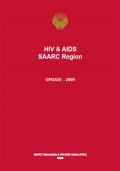
Resource | Publications,
HIV epidemic is the single major reversal in human development in modern history. In most heavily affected countries, HIV has drastically reduced life expectancy even by more than 20 years. The estimated number of persons living with HIV in the world in 2007 was 33 million (30 million –36million).
HIV & AIDS, SAARC Region Update 2009 incorporates updated information on HIV/AIDS. This is the seventh annual report on HIV/AIDS situation in the SAARC Region. It includes general information on HIV/AIDS and describes global, regional and SAARC Member States' HIV/AIDS situation in 2007-2008.





